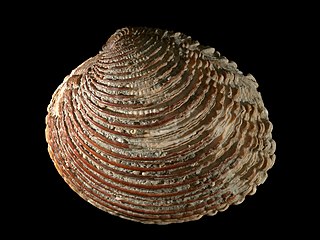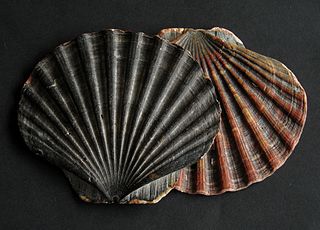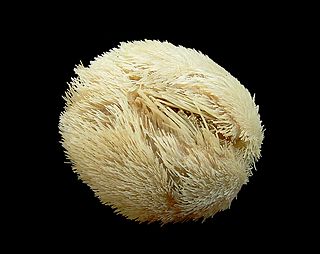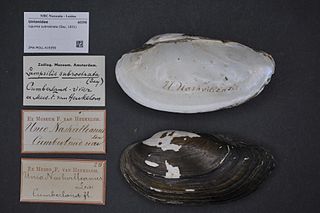
Timothy Abbott Conrad was an American geologist and malacologist.

The Veneridae or venerids, common name: Venus clams, are a very large family of minute to large, saltwater clams, marine bivalve molluscs. Over 500 living species of venerid bivalves are known, most of which are edible, and many of which are exploited as food sources.

Heteroconchia is a taxonomic infraclass of diverse bivalve molluscs, belonging to the subclass Autobranchia.

Conus zebroides, common name, the Quaga cone, is a species of predatory sea snail, a marine gastropod mollusk in the family Conidae, known as the cone snails, cone shells or cones.

Pecten is a genus of large scallops or saltwater clams, marine bivalve molluscs in the family Pectinidae, the scallops. This is the type genus of the family.

Cassidula is a genus of small air-breathing salt marsh snails, pulmonate gastropod mollusks in the family Ellobiidae.

Conasprella articulata, common name the Nada cone, is a species of sea snail, a marine gastropod mollusk in the family Conidae, the cone snails and their allies.

Collonista verruca is a species of sea snail, a marine gastropod mollusc in the family Colloniidae.

Inquisitor glauce is a species of predatory sea snail, a marine gastropod mollusk in the family Pseudomelatomidae. It was first documented by E. A. Smith in 1888. I. glauce is not a broadcast spawner, meaning it does not release unfertilized eggs into the water. Unlike many gastropods, the trochophore stage is not present in the life cycle of these predatory sea snails, meaning it is not found as a veliger. Very little is known about its diet or habits due to its small size and residence in benthic depths.

Echinocardium cordatum, also known as the common heart urchin or the sea potato, is a sea urchin in the family Loveniidae. It is found in sub-tidal regions in temperate seas throughout the world. It lives buried in the sandy sea floor.

Conus vautieri, common name Vautier's cone, is a species of sea snail, a marine gastropod mollusk in the family Conidae, the cone snails and their allies.

Sagittunio subrostratus, commonly referred to as the pondmussel or black pondmussel, is a species of freshwater mussel, an aquatic bivalve in the family Unionidae, the river mussels.

Conus granarius is a species of sea snail, a marine gastropod mollusk in the family Conidae, the cone snails, cone shells or cones.

Conus largilliertii, common name Largilliert's cone, is a species of sea snail, a marine gastropod mollusk in the family Conidae, the cone snails, cone shells or cones.

Conus sanguineus is a species of sea snail, a marine gastropod mollusk in the family Conidae, the cone snails, cone shells or cones.

Turbo reevii, Reeve's turban, is a species of sea snail, a marine gastropod mollusk, in the family Turbinidae.

Chionopsis gnidia, is a species of medium-sized saltwater clam, a marine bivalve mollusc in the family Veneridae, the venus clams. It was originally described in 1829 by W. J. Borderip and G. B. Sowerby as Venus gnidia. It can be found throughout the coasts of the United States to Peru.

Chionopsis amathusia is a species of bivalve from the family Veneridae in the genus Chionopsis that was originally described by R. A. Philippi in 1844 as Venus amathusia. It can be found throughout Mexico, Central America and parts of South America coasts.
Chionopsis crenifera is a species of bivalve from the family Veneridae in the genus Chionopsis that was initially described by G. B. Sowerby I in 1835 as Venus crenifera. It can be found throughout Mexico, Central America and parts of South America coasts.
Chionopsis crenata is a species of bivalve from the family Veneridae in the genus Chionopsis that was originally described as Venus crenata in 1791 by John Frederic Gmelin. It is mostly found throughout the Americas primarily in the Atlantic Ocean.


















